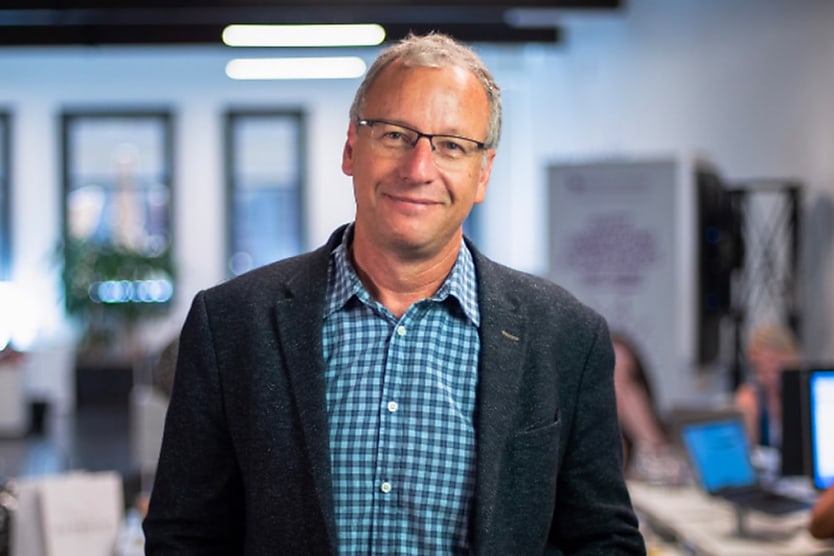Why you can’t ignore the impending talent shortage and how to prepare for it
SHARE THIS ARTICLE

Data shows that the basic demographic makeup of the workforce is changing – the desperation businesses feel in finding and keeping talent is only going to get worse.
I recently came across this chart from The Conference Board that illustrates the already incredibly tight labour market in the US.
Before COVID-19, the unemployment rate in US was at 50-year record lows. It dropped down to 3.5 per cent a couple of months ago, and it’s just ticked up to 3.7 per cent.
The blue line in the graph at this link, as above, is the Help Wanted OnLine® (HWOL) Index – all of the job vacancies that are being advertised. Essentially, it’s a measure of demand. And if you think of the red line (in the graph with the unemployment rate) as a proxy for supply, you’ll see that there’s never been such a huge gap in terms of supply and demand in the labour market.
The other facet of the labour market we can’t ignore is the skills shortage. Employers are going to great lengths – some offering “haircuts, free food and $10,000 signing bonuses” according to The Sydney Morning Herald – to find workers. That same article cites government data that shows the number of occupations in shortage rose from 153 to 286 this past year.
Changing demographics
After World War II, there was a huge increase in population – leading to the generation we now call the baby boomers.
According to UN data, the working age population (15-64 years) for Australia had been rising at a fairly steady rate since 1950 but has recently flattened out.
At the same time, the elderly population (65+ years) has been steadily increasing.
As the Baby Boomers retire, it’s predicted that the elderly population will grow by almost 25 per cent in the next eight years. But as they leave the workforce and their healthcare demands increase, the working age population will only increase by 1 per cent during that time.
Essentially, supply is fixed and demand continues to increase.
So, when you overlay this demographic data with the skills shortages, the near 50-year low unemployment, and a potential recession, there’s no question businesses are headed into a very challenging time.
Playing offence and defence
Most US CEOs are preparing for a brief, but shallow recession. They’re ‘battening down the hatches’ in the form of budget cuts and hiring freezes.
I would argue the most challenging part is waiting for the storm. But once the storm hits and we understand how bad it is, the strategic leaders will start to shift their mindset from, “How do I prepare for the storm?” to “How do I accelerate out of the storm?”
That’s when hiring will start to increase. Recruiters will be calling your best talent – many of which are working in a remote/hybrid environment, which is inherently more challenging from an engagement perspective.
Companies will need to play offence and defence. From an offence standpoint, ask yourself these questions:
- How will I compete for talent?
- Is my talent acquisition team and process optimised for a war on talent?
From a defence standpoint, you need to ask:
- How will I retain my best talent and minimise turnover?
- Do I know who my most critical employees are?
Doubling down on human connection
One strategy that we know works in this fight for talent is focusing on human connection.
By doubling down on those authentic relationships between people and across teams, you can rebuild and strengthen the connective tissues in your organisation. And no, I’m not talking about the occasional office party (although making a habit of celebrating wins is critical for building trust and collaboration).
Recent Gallup research shows that having a best friend at work is strongly linked to retention: “Having a ‘best friend’ at work has become more important since the start of the pandemic, even considering the dramatic increase in remote and hybrid work.”
Our own research echoes these findings. When compared to employees who don’t feel actively connected to their workplace, connected employees are:
- 3x more likely to say their workplace keeps them engaged
- 5.5x more likely to report their workplace motivates them to go above and beyond their job responsibilities
- 3.5x more likely to say their company is a great place to work and would recommend it to others
You just don’t see this kind of lift from transactional adjustments in compensation, perks and benefits.
So, how can you rethink how connections are built across your organisation? Start at the most basic level with the connection between the employee and their direct manager. That’s the foundation. Next, look at how to build better connections between peers and within a team. And finally, you need to strengthen the connection with your company as a whole.
At every step in the employee journey – onboarding, promotions, learning, mentor programs, etc – you have an opportunity to spark joy and nurture a culture of belonging. The companies that seize those opportunities will not only weather the storm but come out winning on the other side.
Brent Pearson is the founder of Enboarder
